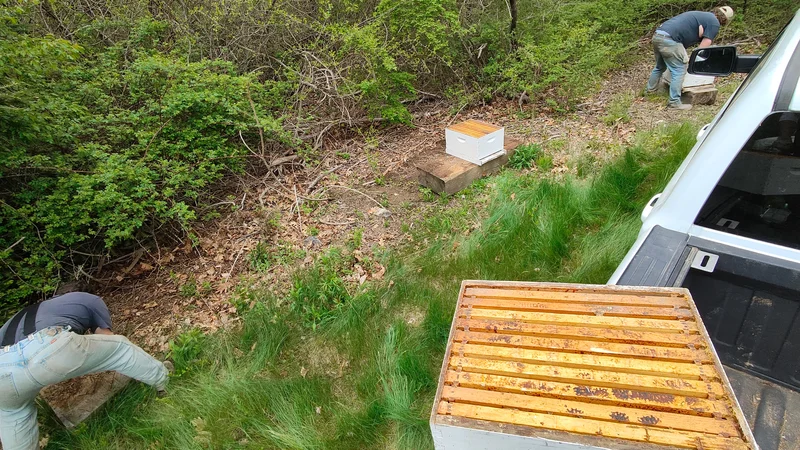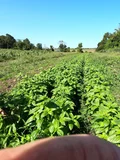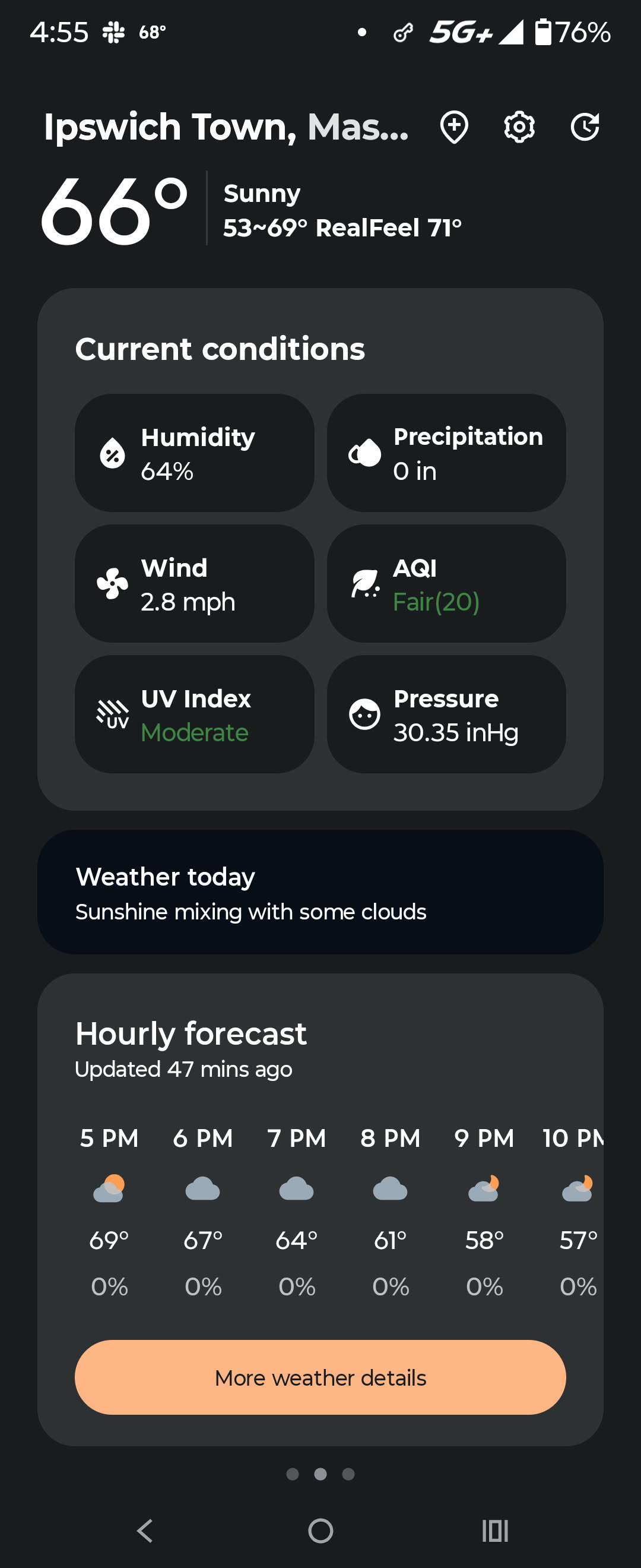TL;DR
We harvested peppers, eggplants, tomatoes, and sunflowers. Cleaned up red drying onions for the CSA shares this week, and sixty-seven dozen eggs came in since Friday. We also transplanted lettuce and direct seeded more salad turnips and radishes.
Beneficial Insects, All Sorts
Many things we grow on the farm require a helping hand of pollinators to fruit so there are honeybee hives placed strategically around the property. They are painted white for clear identification and resistance to unnecessary heat from the summer sun. We set them up in early May then stack additional boxes on top as the season progresses.

When people talk about pollination, they often focus on bees. Many other common insects also play a role in pollination, including wasps, beetles, flies, mosquitoes, and ants. Vertebrates like bats and certainly birds also contribute to pollination.
I would add to this list moths and butterflies for completeness, but they are often a sign of plant damage soon to come and we don’t speak of such things lest at the very mention they visit our farm. I once experienced a Hornworm infestation that ruined and entire tomato season and I never forgave the sight of caterpillars in the garden, even if some of them and their winged counterparts are beautiful.
The Variable Need of Farm Labor
Throughout the season, the need for more hands has varied due to overlapping and competing tasks. For example, harvesting and planting in the late summer and early fall seasons as we are doing now with a small team really requires us to be very efficient and organized.
The thing is that we have a lot of should-later activities, but just never enough hands to get them done. And there are most certainly tasks that require two people for safety and efficiency reasons, like moving chicken coops. Can Jamie do this alone? Yes, but it takes hours. With another pair of hands, we got it down to 1 hour and 20 minutes yesterday. Though this costs an extra minimum-wage hour, it’s worth it for the efficiency gain because then Jamie is freed up another two hours to do other urgent and/or important things. This is called opportunity cost and it’s a very real thing on a small farm.
But like a foot on the gas pedal, a farm operator needs to be careful not to burn through budgeted labor hours too quickly. In the summer months, this is hard because there’s so much to harvest and plant and seed and water and…sufficed to say, there’s a lot to do so you need a bigger crew than in the early or late season. There’s no ‘coasting’ in the summer, or really any time of the year, but there is often an extra supply of labor in the form of students and educational folks on summer break looking to earn some money. Either way, we need to be mindful of our budget and make the most of the labor we have.
At some point, I will formulate a graph to visualize the need for labor over the course of the season. I think this will become an emergent theme over the next few months.
AI Summary from Field Notes
Main Themes:
- Crop Harvesting and Processing: Harvesting peppers, eggplants, tomatoes, sunflowers, and onions; processing onions, planting lettuce, and managing produce storage.
- Teamwork and Workload: Changes in team size (4 before lunch, 3 after), collaboration, and task delegation.
- Crop Management: Managing sunflowers at mid-life cycle, onions in orange bins, and lettuce planting.
- Storage and Distribution: Storing tomatoes, pears, apples, and preparing produce for CSA pickup.
Activities Performed:
- Harvested red Italia peppers, Carmen peppers, eggplants, and slicer tomatoes.
- Washed peppers, cut basil, and watered lettuce.
- Planted lettuce in the field and used a wheel seeder for beets/radishes.
- Processed onions (removed withered tops, skins, dried onions).
- Watered pigs and chickens, harvested sunflowers, and retrieved onions from another property.
New Observations:
- Sunflower Harvesting: Sunflowers were harvested at mid-life cycle, not when young.
- Wheel Seeder Use: A wheel seeder was used for planting beets or radishes.
- Onion Processing: Dried red onions were stored in orange bins and processed for the barn.
- Cross-Property Coordination: Team members drove to the other side of the property to retrieve onions.
Questions for Future Research:
- How does mid-life sunflower harvesting affect yield or quality?
- Is the wheel seeder effective for planting beets/radishes? Are there challenges?
- What is the standardized process for onion processing?
- How does team size impact task efficiency and communication?
- How are pears and apples managed on the property, given they are not directly handled?
Suggested Actions:
- Document sunflower harvesting details (timing, yield, quality).
- Test the wheel seeder’s performance for beets/radishes and adjust usage.
- Standardize onion processing to improve efficiency.
- Track teamwork patterns to analyze team size effects.
- Investigate pears/apples management practices on the property.
Part 1
Main Themes:
- Crop Harvesting and Processing: Harvesting various crops (peppers, eggplants, tomatoes, sunflowers), processing onions, and storing produce.
- Teamwork and Workload: Changes in team size (4-person team before lunch, 3-person team after), collaboration with others, and task delegation.
- Crop Management: Managing different crop stages (sunflowers at mid-life cycle, onions in orange bins, lettuce planting).
- Storage and Distribution: Storing tomatoes, pears, apples, and preparing produce for CSA pickup.
Activities Performed by the Intern:
- Harvested red Italia sweet peppers, Carmen peppers, eggplants (Italian round, Japanese long purples), and big slicer tomatoes.
- Washed peppers and had lunch.
- Cut basil and watered lettuce.
- Planted lettuce in the field.
- Processed onions (removed withered tops, skins, and dried onions).
- Watered pigs and chickens.
- Helped with sunflower harvesting (two blue barrels worth).
- Assisted in seed planting (beets or radishes) using a wheel seeder.
New Things Not Yet Encountered:
- Sunflower Harvesting at Mid-Life Cycle: Sunflowers were harvested at a mid-stage, not when they were young.
- Wheel Seeder Usage: A wheel seeder was used for planting beets or radishes.
- Onion Processing in Orange Bins: Drying red onions in orange bins and processing them for the barn.
- Cross-Property Coordination: Team members drove to the other side of the property to retrieve onions.
Questions for Future Research:
- Sunflower Growth Stages: How does harvesting sunflowers at mid-life cycle affect yield or quality compared to earlier stages?
- Wheel Seeder Efficiency: How effective is the wheel seeder for planting beets or radishes? Are there any challenges with it?
- Onion Processing Techniques: What is the optimal method for removing withered tops and skins from onions?
- Teamwork Dynamics: How does the team size (4 vs. 3 people) affect task efficiency or workload distribution?
- Crop Storage Logistics: How are pears and apples managed (since they are not directly handled)?
Suggested Actions:
- Document Sunflower Harvesting: Record details about sunflower harvesting at mid-life cycle, including timing, yield, and quality.
- Test Wheel Seeder for Planting: Evaluate the wheel seeder’s performance for beets or radishes and adjust usage if needed.
- Optimize Onion Processing: Standardize the process for removing withered tops and skins to improve efficiency.
- Track Teamwork Patterns: Note how team size affects task completion and communication.
- Clarify Crop Management for Pears/Apple: Investigate how pears and apples are managed on the property, even though they are not directly handled.
[end of post]
Enjoy Reading This Article?
Here are some more articles you might like to read next:











